Two sets of twins were born while I was in Boston today. No complications. I’m becoming a believer in the magic of pasture lambing…
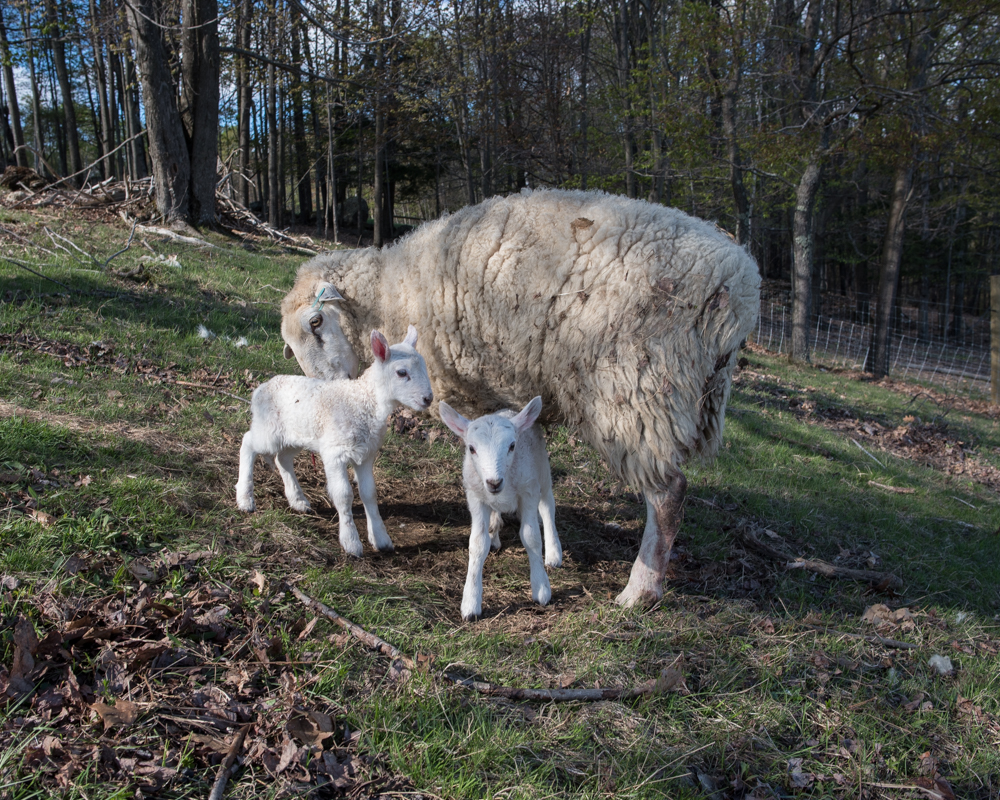
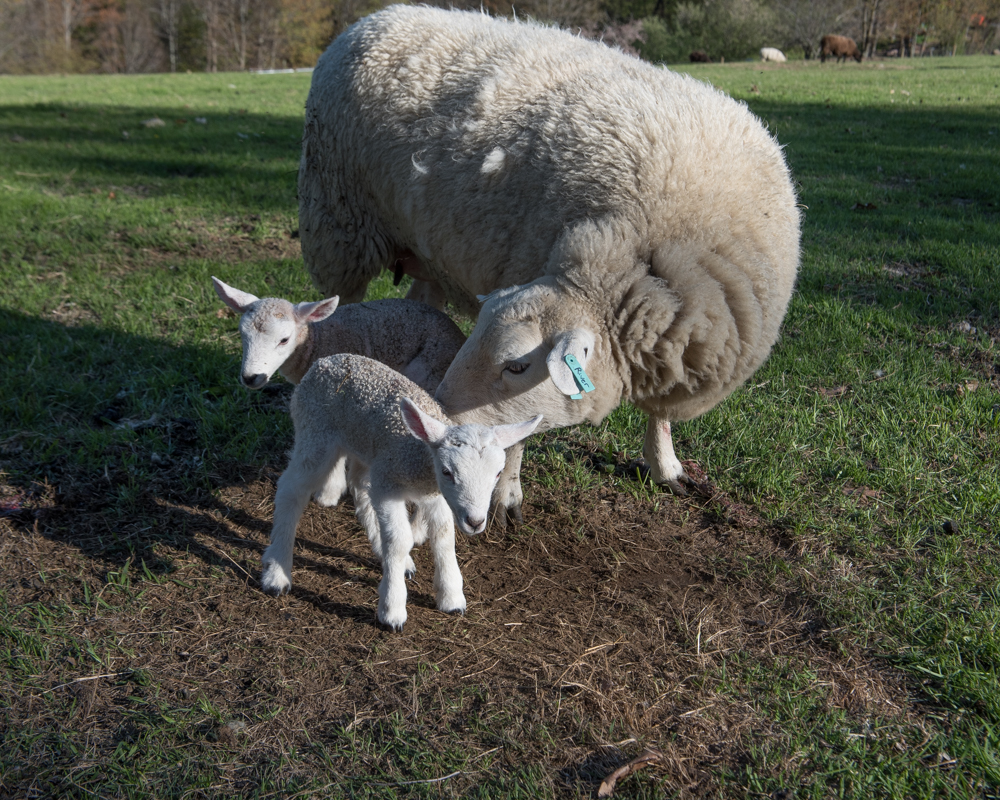
Tagged: Barb Eriksson, easy, ewes, Hollow Oak Farm, lambs, newborn, pasture lambing, twins
Two sets of twins were born while I was in Boston today. No complications. I’m becoming a believer in the magic of pasture lambing…


Tagged: Barb Eriksson, easy, ewes, Hollow Oak Farm, lambs, newborn, pasture lambing, twins
No lambs today, but the grass seemed as ready as it would get in the near future, so I let the pregnant ewes out of their little brown jail. They seemed to appreciate the fresh spring pasture.
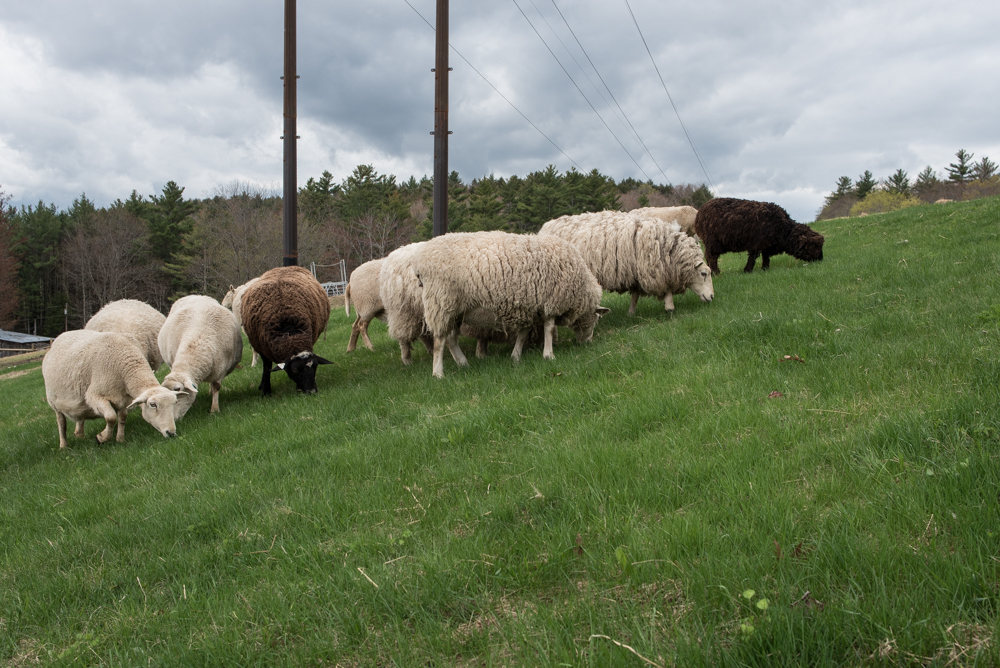
Tagged: ewes, green grass, Hollow Oak Farm, hungry, new pasture, pregnant, sheep, spring
Today was sheep-shuffling day at the farm. The most pressing motivation was getting the very-pregnant ewes into a group of their own without Bravo. The last newborn lamb he encountered survived, but I didn’t want to further press anyone’s luck. It was also time for the barn lambs to get used to life outdoors. Here’s how the shuffle went:
It all went over reasonably smoothly because Bill Fosher was once again here to save me from my inexperience. Cass and Chloe each did what they could to move unwilling sheep to unfamiliar places, and then Bill’s Fern stepped in and got it done.
The lambs in their new paddock seemed a little bewildered, but the rest of the sheep just seemed happy that the grass was finally growing. Bravo is always happy.
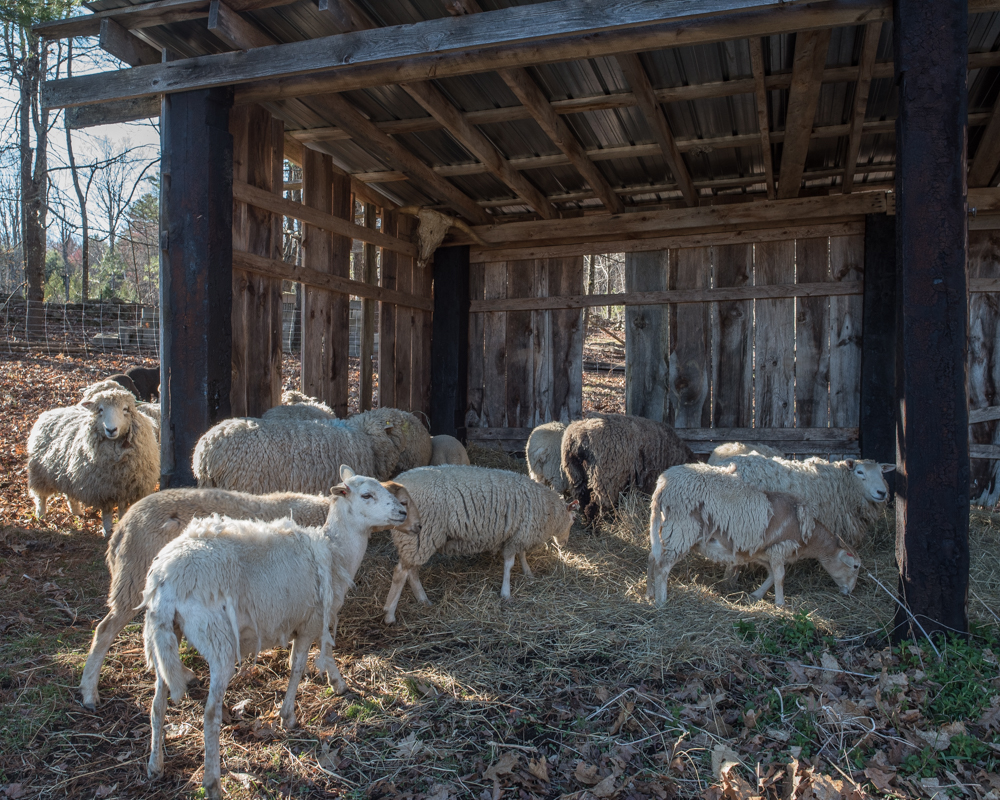
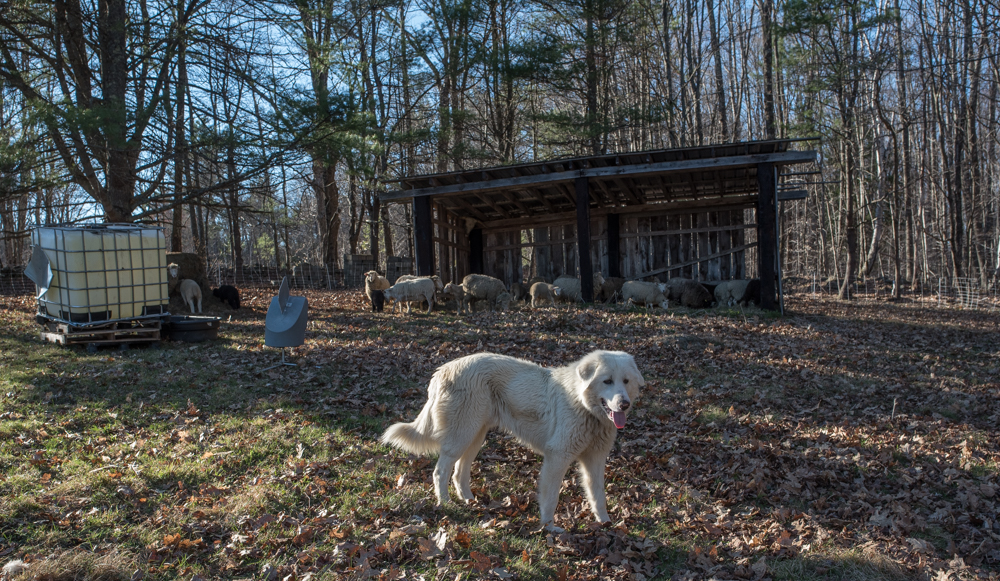
Tagged: bravo, Cass, Chloe, ewes, Highland cattle skull, Hollow Oak Farm, lambs, lower pasture, pole barn, sheep
We’ve just gotten to the point in the year when water no longer freezes hard outside, and this small change has immeasurably improved my daily life at the farm. At some point I hope to have a clever system for providing water to my sheep in the winter, but I didn’t have it this year. My non-clever system was based around 5-gallon jerry cans that I filled with hot water in the bathtub and carried out to the sheep.
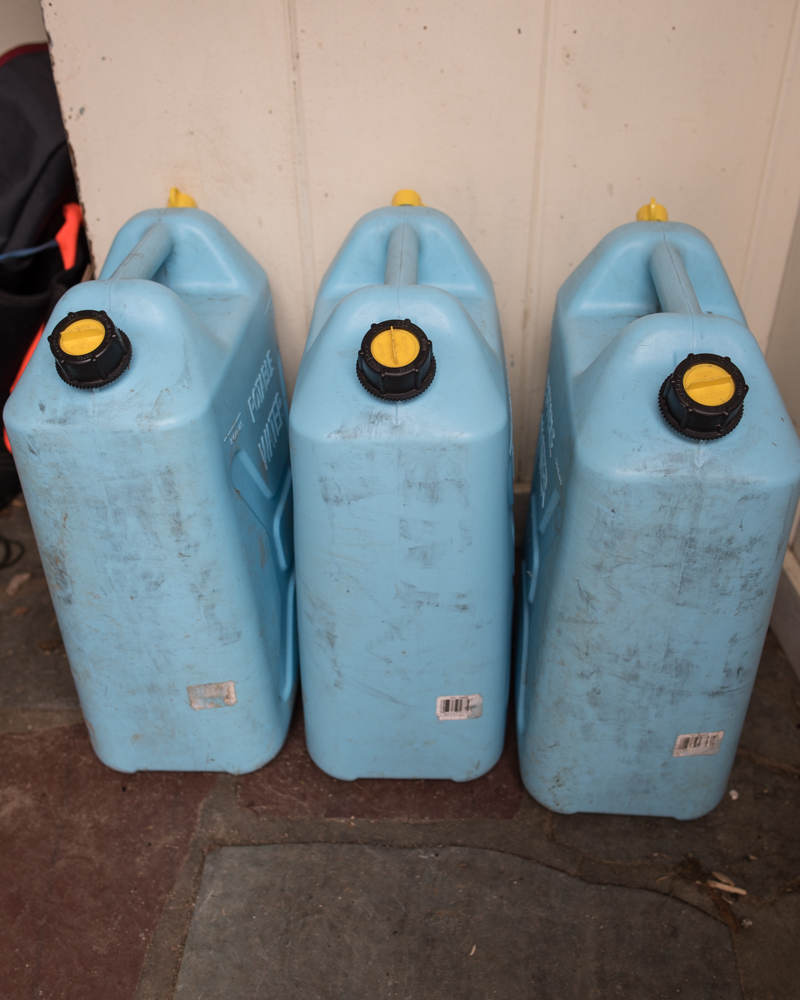
The trick was to bring the sheep just the right amount of water that they would drink it all before it froze. Depending on how much snow was on the ground or how thirsty the lambs were for their mothers’ milk, this usually meant 3-4 trips a day with a couple of jerry cans each time. Water, I discovered, is surprisingly heavy*, a fact my back and shoulders will probably remember well into the summer.
Now I’m living the easy life, though. The ewes and lambs in the barnyard have a 50-gallon stock tank that I can fill with a hose from the hydrant at the wood boiler.
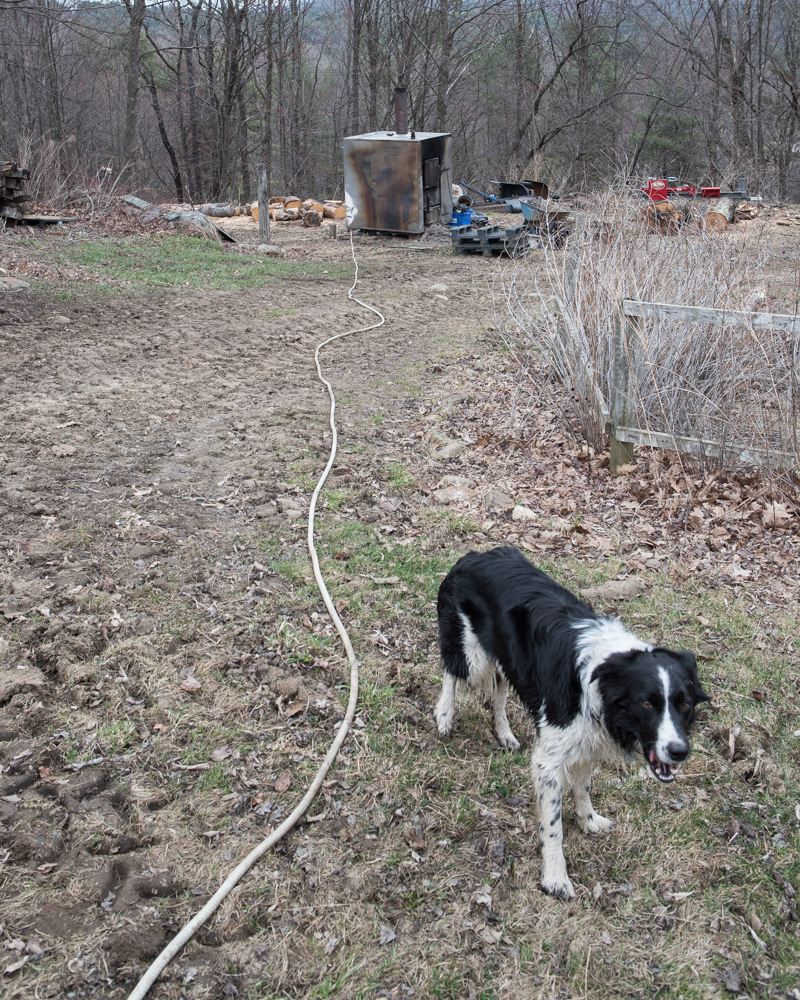
 It goes very smoothly unless a lamb gets interested.
It goes very smoothly unless a lamb gets interested.
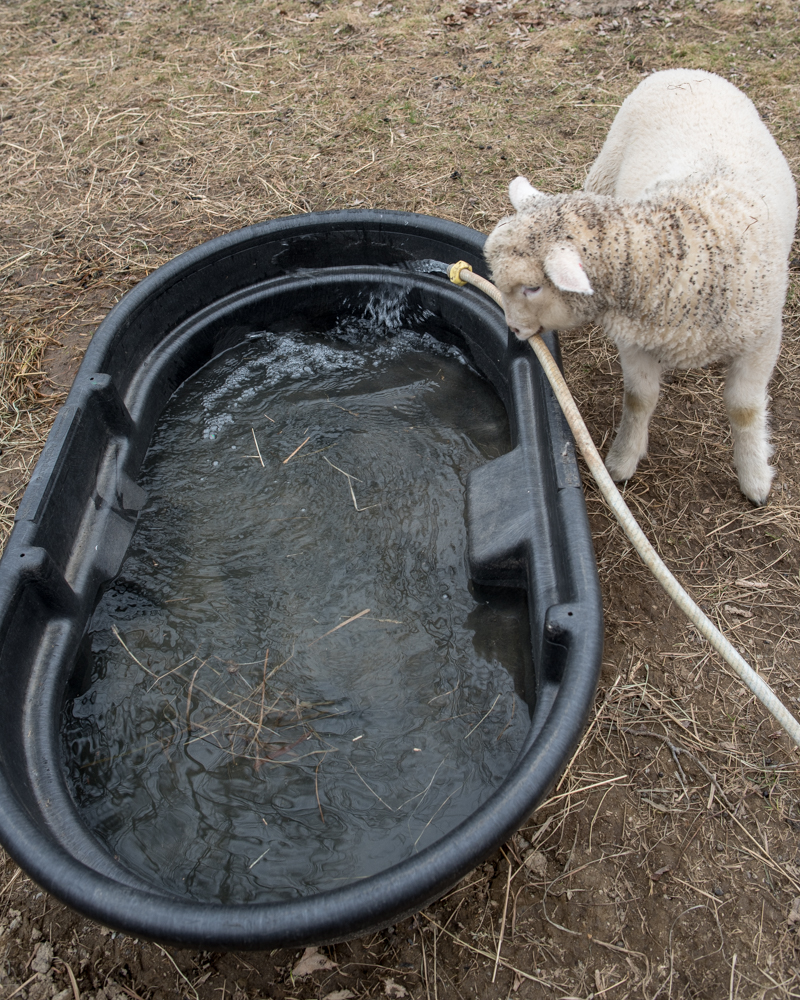
Out in the field, the system is even slicker. The Badger Company, a high-end personal care products manufacturer in the town next door, buys organic olive oil in 1000-litre containers that they only use once; when they’re empty, Badger donates them to local farmers.
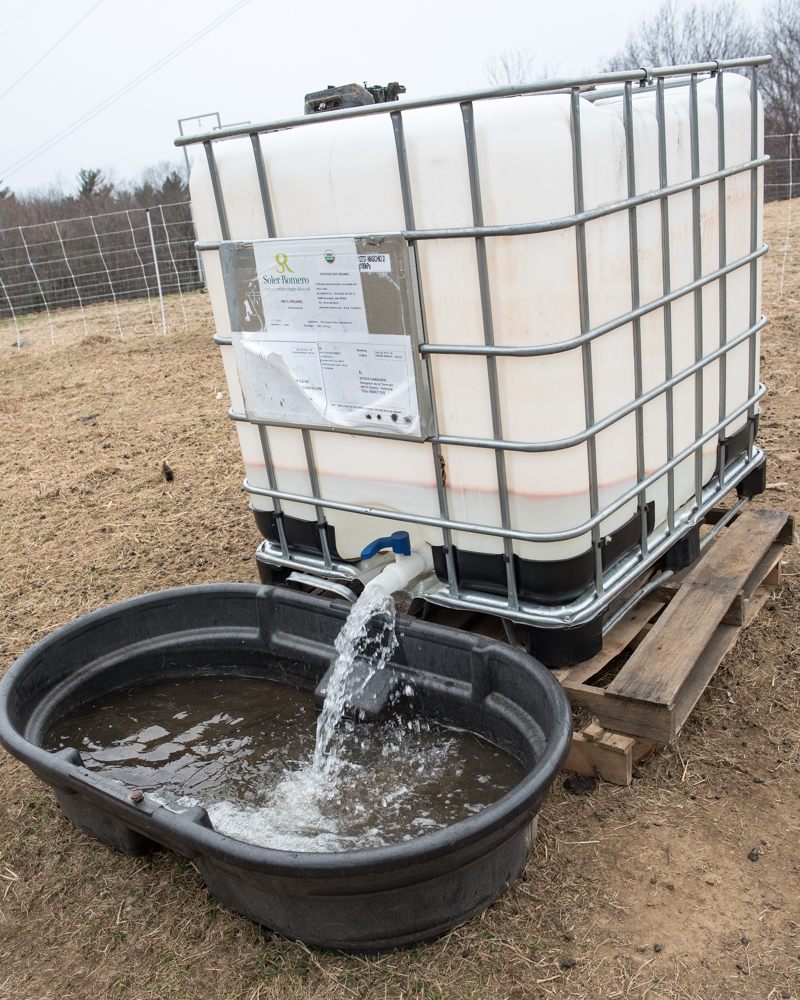
The next refinement will be to move the storage tank to the top of the hill, connect it to hoses feeding float valves on the 50-gallon water bowls, and then in principle I’ll have an automatic watering system. To be continued!
___________
*59 pounds each, for the data-driven among my readers.
Tagged: Badger Company, carrying, efficiency, ewes, freezing, heavy, Hollow Oak Farm, lambs, relief, sheep, spring, stock tank, water
Sheep need a source of salt in addition to their grass and water. The local geology doesn’t offer them much, so I provide them with a commercially-prepared mixture of sheep minerals — sodium chloride plus a bunch of trace elements — in a mineral feeder that keeps the salt from turning into a sodden mass when it rains.
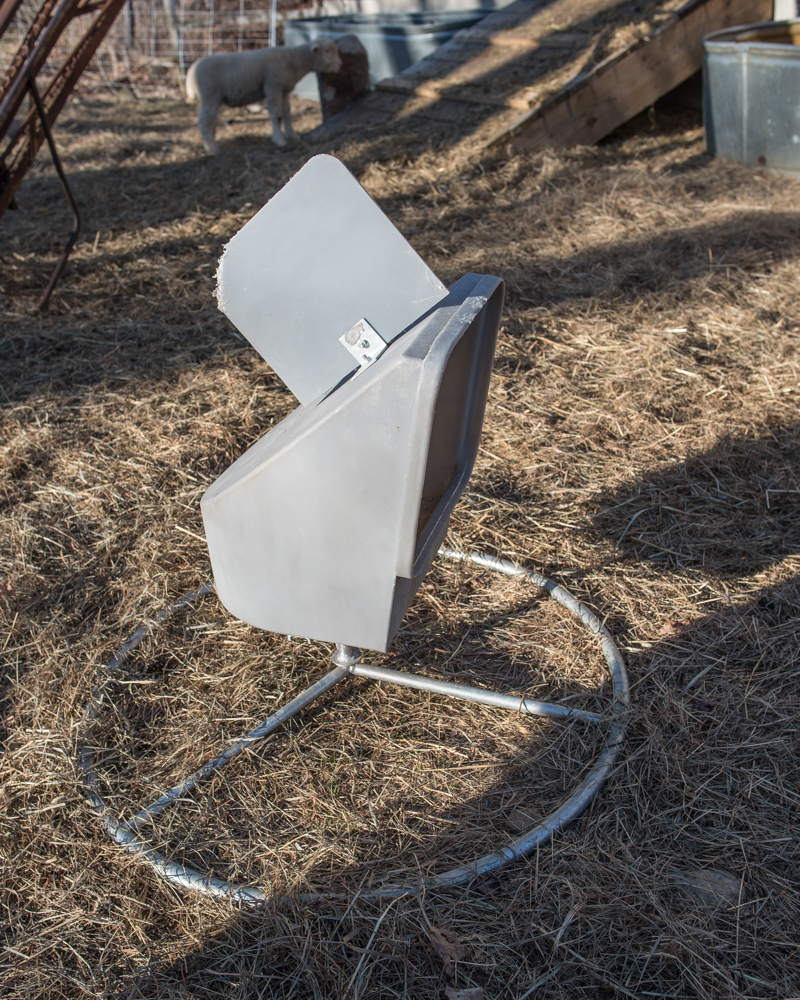
The sheep will ignore the minerals for weeks at a time, and then suddenly decide that they have a desperate craving for salt. I have no idea what drives the boom/bust cycle.

The most puzzling part of the whole endeavor, though, is how they manage the geometry of pooping in the feeder.
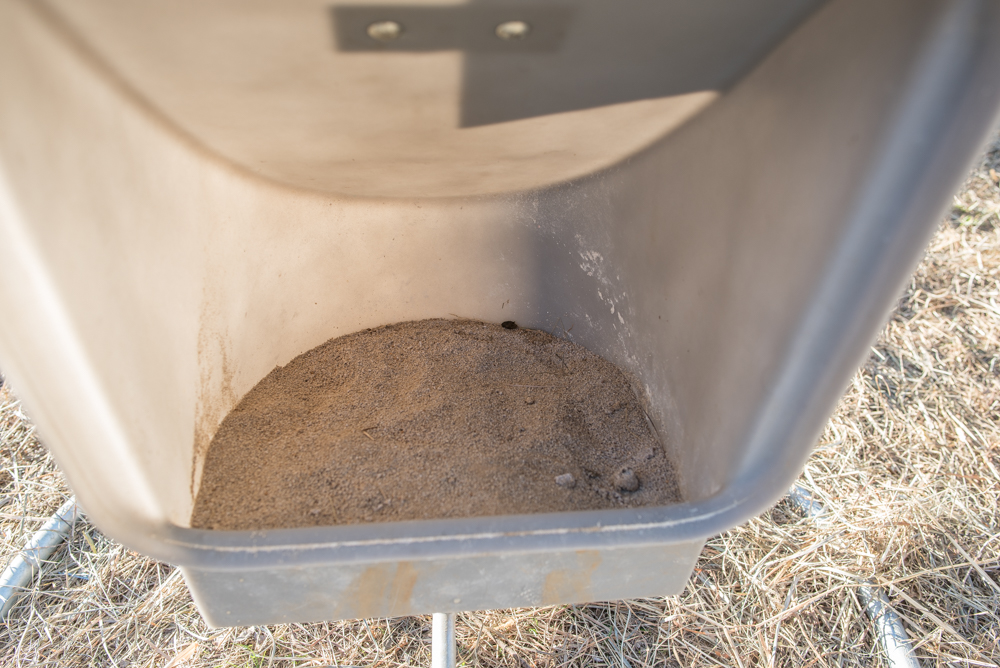
Tagged: barnyard, ewes, geometry problem, Hollow Oak Farm, lambs, mineral feeder, poop, salt, sheep, sheep minerals
The other big weekend project was moving the pasture ewes to a small subdivision of the larger pasture they’ve been calling home all winter. Everybody seems pretty relaxed with the reduced space.
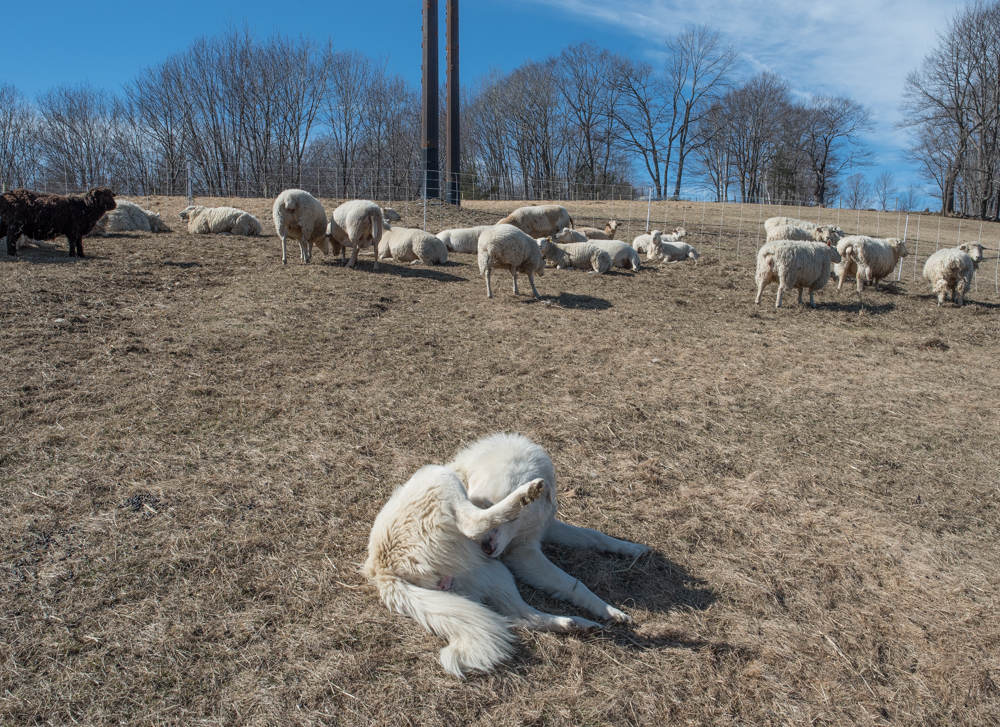
My motivation for this change is that the grass is starting to grow, and the sheep will aggressively eat the smallest growth of spring grass, stunting it before it gets going. The electronet enclosure I moved them to will be the sacrificial lamb (am I allowed to say that?); the sheep will be very hard on the new growth in this area, but the grass in the remaining 80% of the larger enclosed pasture will get to flourish before I put animals on it again. In subsequent years, I’ll let different parts of the pasture take the hit, with the expectation that the entire area gradually improves with careful grazing management.
Tagged: bravo, electronet, ewes, growing grass, Hollow Oak Farm, pasture, strategy, subdivision
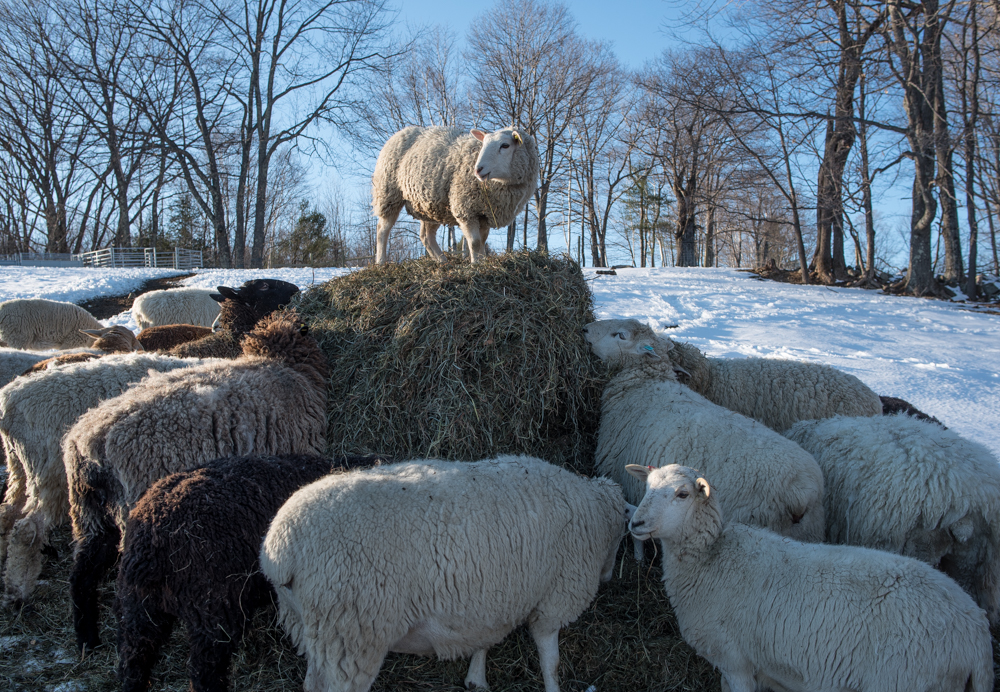 On the morning of the storm last week, I put out a round bale for the sheep in the field without setting up the feeder enclosure around it as I usually do. This was motivated entirely by expediency rather than any lofty management goals. Folks use bale feeders to keep their livestock from scattering and wasting the grass in the bale, but I noticed that the sheep were eating the unenclosed bale rather neatly, and with considerably less effort than when the feeder panels were in place. The feeder panels are awkward to wrestle into place and set up, so I decided to try the experiment with a second bale. No conclusions yet on efficiency of feed use, but the unenclosed bale is providing new opportunities for the more athletic ewes in the flock.
On the morning of the storm last week, I put out a round bale for the sheep in the field without setting up the feeder enclosure around it as I usually do. This was motivated entirely by expediency rather than any lofty management goals. Folks use bale feeders to keep their livestock from scattering and wasting the grass in the bale, but I noticed that the sheep were eating the unenclosed bale rather neatly, and with considerably less effort than when the feeder panels were in place. The feeder panels are awkward to wrestle into place and set up, so I decided to try the experiment with a second bale. No conclusions yet on efficiency of feed use, but the unenclosed bale is providing new opportunities for the more athletic ewes in the flock.
Tagged: athletic, bale feeder, baleage, climbing, ewes, goat, hay, Hollow Oak Farm, pasture, sheep
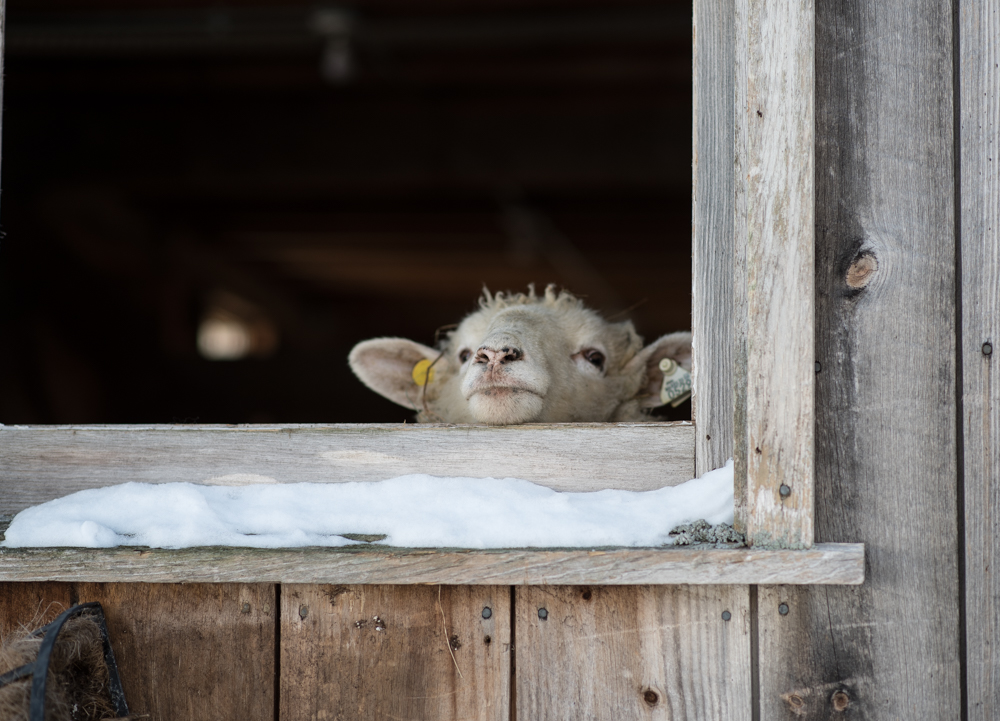 The sheep in the barn get a little bit of corn every morning, about which they are rather enthusiastic. I’ve enjoyed watching them learn to anticipate the timing of their beloved grain supplement. At first, their chorus erupted only when they heard me scooping corn out of the bin, but gradually their predictive abilities have improved. Recently they’ve started shouting for their hit if I simply walk near the barn at the usual time, and yesterday, one of the ewes discovered that she could make beseeching eye contact from the front window of the barn.
The sheep in the barn get a little bit of corn every morning, about which they are rather enthusiastic. I’ve enjoyed watching them learn to anticipate the timing of their beloved grain supplement. At first, their chorus erupted only when they heard me scooping corn out of the bin, but gradually their predictive abilities have improved. Recently they’ve started shouting for their hit if I simply walk near the barn at the usual time, and yesterday, one of the ewes discovered that she could make beseeching eye contact from the front window of the barn.
Tagged: begging, corn, drug, ewes, hit, Hollow Oak Farm, Jedi mind tricks, learning, sheep, window
For a matter as binary as pregnancy, the state of my sheep has been more ambiguous than I would have expected. A more accepting person would perhaps be at peace with the idea that either they give birth or they don’t, and then you know if they were pregnant. I’m a fair measure more uptight than that, and the ambiguity has already allowed Bravo to eat one (and perhaps two) lambs, so today we set out to establish some facts. In attendance with me were Bill Fosher, grazing mentor, Simon Gascoyne, large animal veterinarian, and 19 sheep who may or may not have been pregnant. Simon brought his ultrasound machine, allowing him to directly image any fetuses that were present and thus banish uncertainty in this realm.
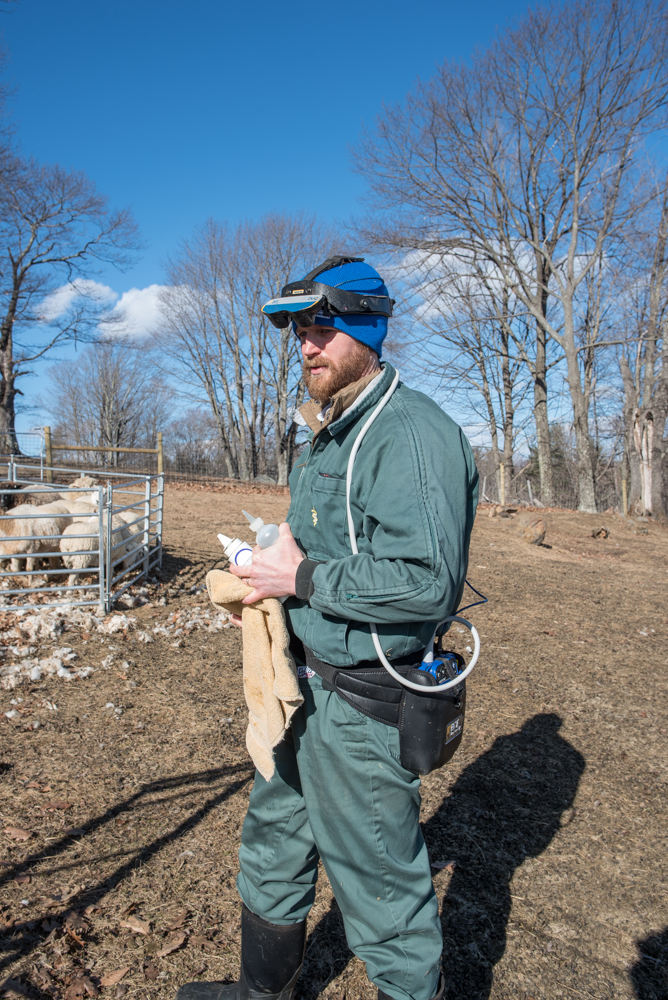
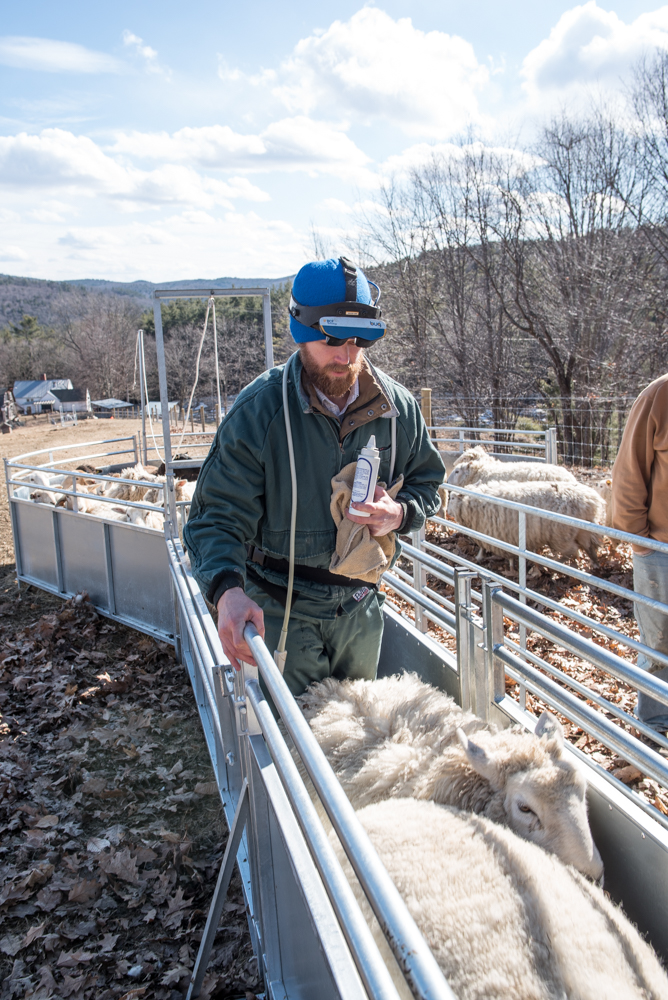
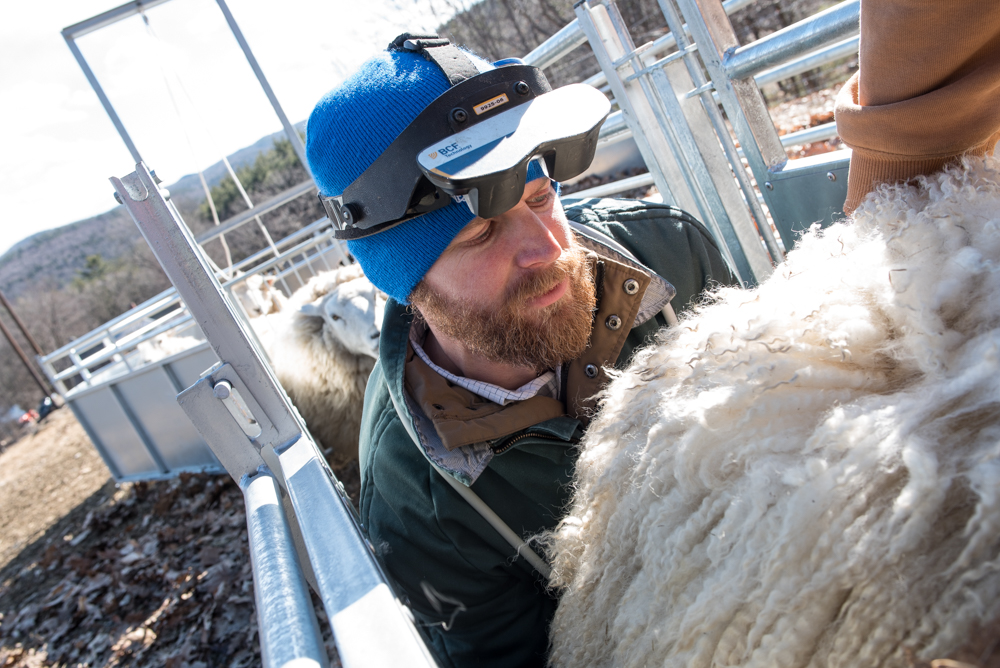 With sheep, the probe is used externally (cows are less fortunate) on the abdomen, and Simon can see the ultrasound-generated image on a version of virtual-reality goggles. The bright sun necessitated a towel over his head, while Bill watched the image projected onto an external monitor.
With sheep, the probe is used externally (cows are less fortunate) on the abdomen, and Simon can see the ultrasound-generated image on a version of virtual-reality goggles. The bright sun necessitated a towel over his head, while Bill watched the image projected onto an external monitor.
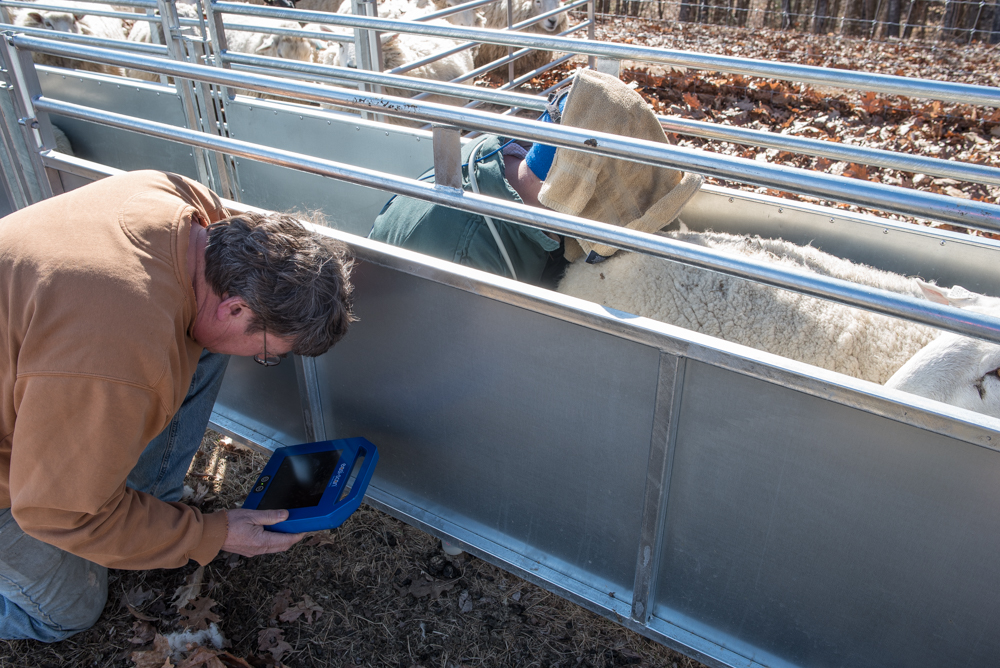
The harvest of facts:
So of my 27 adult ewes, 6 have already lambed, one is due this weekend, 4 are not pregnant, one lost her lamb to Bravo, and 15 are due in May or early June. Nary an alternate fact among’em.
______________
Postscript: I’m still getting used to the realities of veterinary medicine on a farm. My first surprise was the extent to which large animal vets assume farmers are competent people. I’ve called my vet a couple of times with problems whose solution was some medication or other. He would leave me bottles of meds at his office’s front desk with instructions about dosage, and administering the injections was left to me. The other shock is pricing. The last time I had an ultrasound, the bill to my insurance company ran into the thousands of dollars. Today’s work was included in the cost of a $125 farm visit. If I’d been less chatty, we could have run pregnancy checks on twice as many sheep. I’m still trying to figure out what conclusions to draw from all this, but I’m not inclined to complain…
Tagged: Bill Fosher, ewes, facts, Hollow Oak Farm, lambing, lambs, pregnancy, Simon Gascoyne, ultrasound
Bruce Clement has shorn something beyond 100,000 sheep — he says he stopped counting a while ago — and is mostly retired, still shearing for just a few farmers he’s worked with forever. I’m not sure how I got lucky enough for him to take me on, but I suspect pity played a role, thinking he might guide me away from some of the more egregious mistakes of a very green shepherd. In any case, I’m grateful for his skillful work and the ancillary wisdom he shares as he maneuvers through my flock.
Today’s task was not a full removal of fleece, but rather an invasion of privacy. Shepherds around here call it “crutching”, removing wool from the belly, legs, and crotch of pregnant sheep so that it’s easier to observe their physical state in the leadup to lambing. Lambs will also have any easier time figuring out how to nurse if they don’t have to search for teats in a sea of dirty wool.
The trick to shearing, Bruce explained, is mostly in learning how to handle sheep. When I do it, the activity looks like a messy game of tackle football, with the ewe struggling to get over the goal line. Bruce turns it into something more like judo as he smoothly guides the sheep onto its backside.
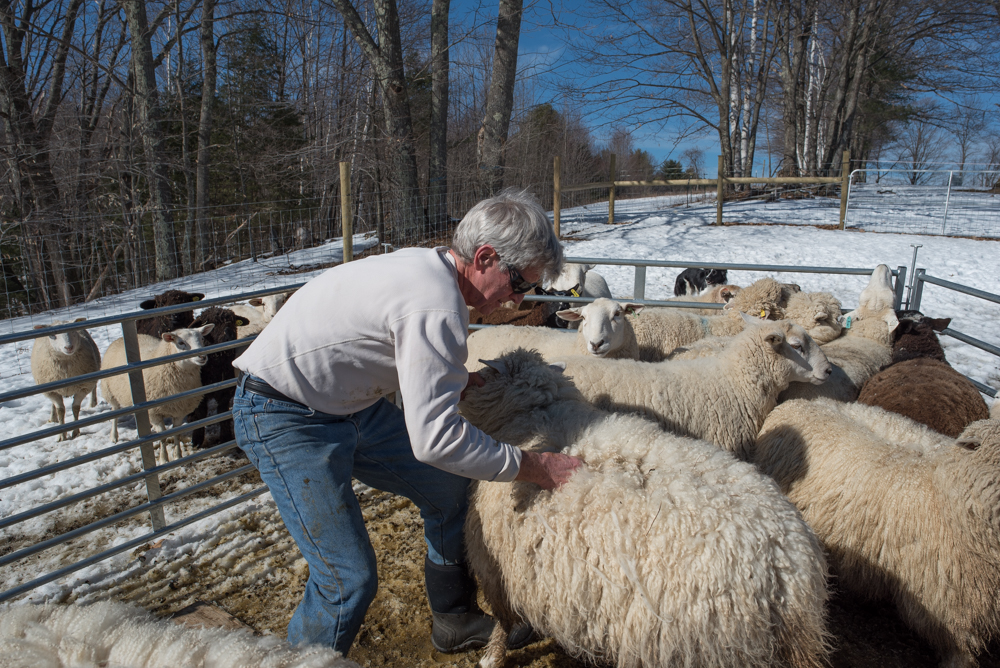
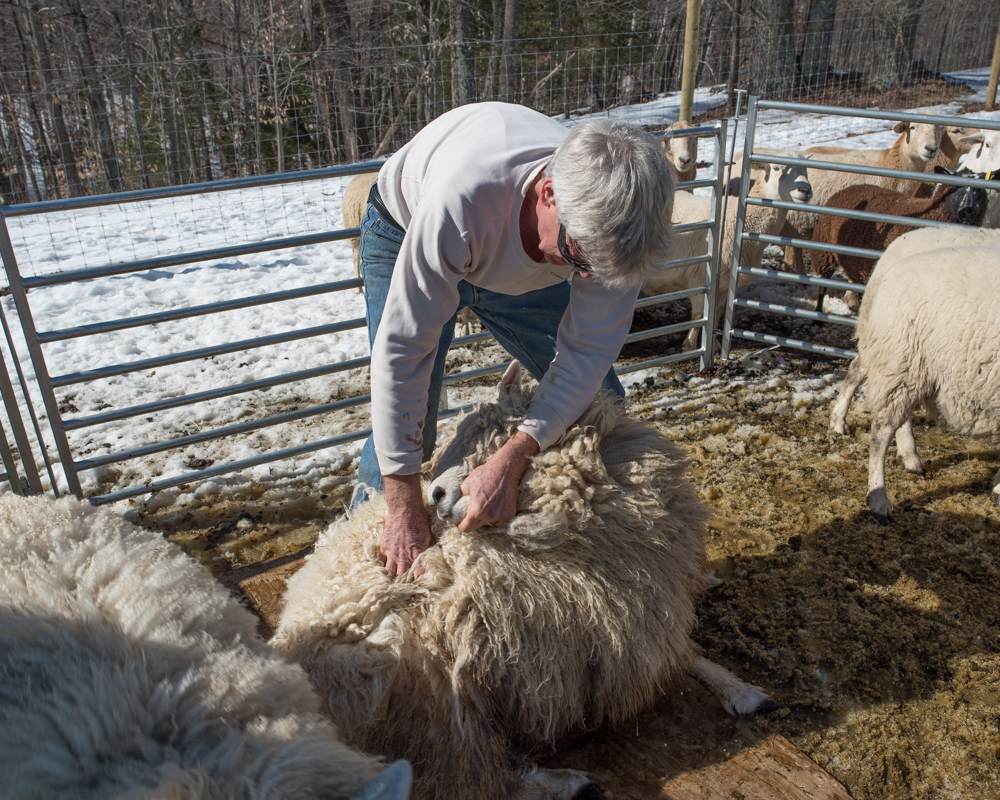
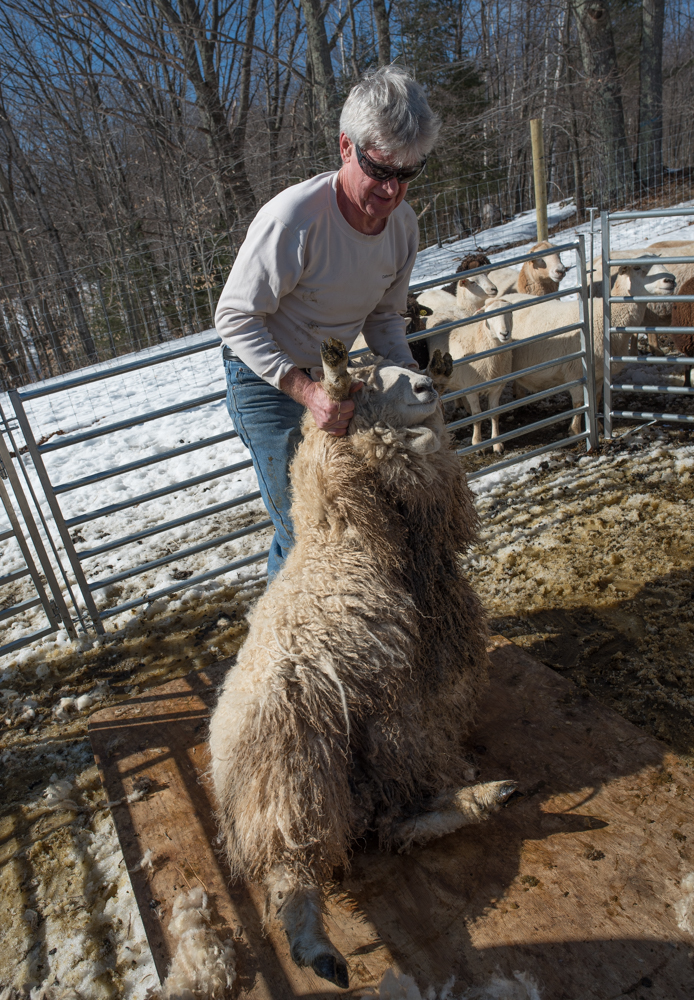
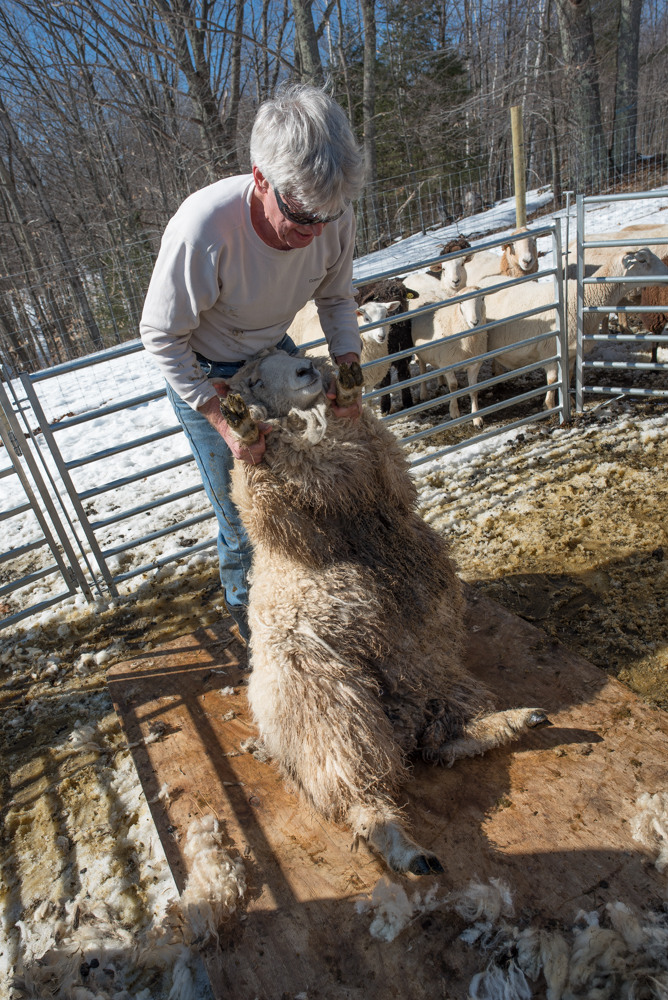
And then the crutching itself takes less than a minute.
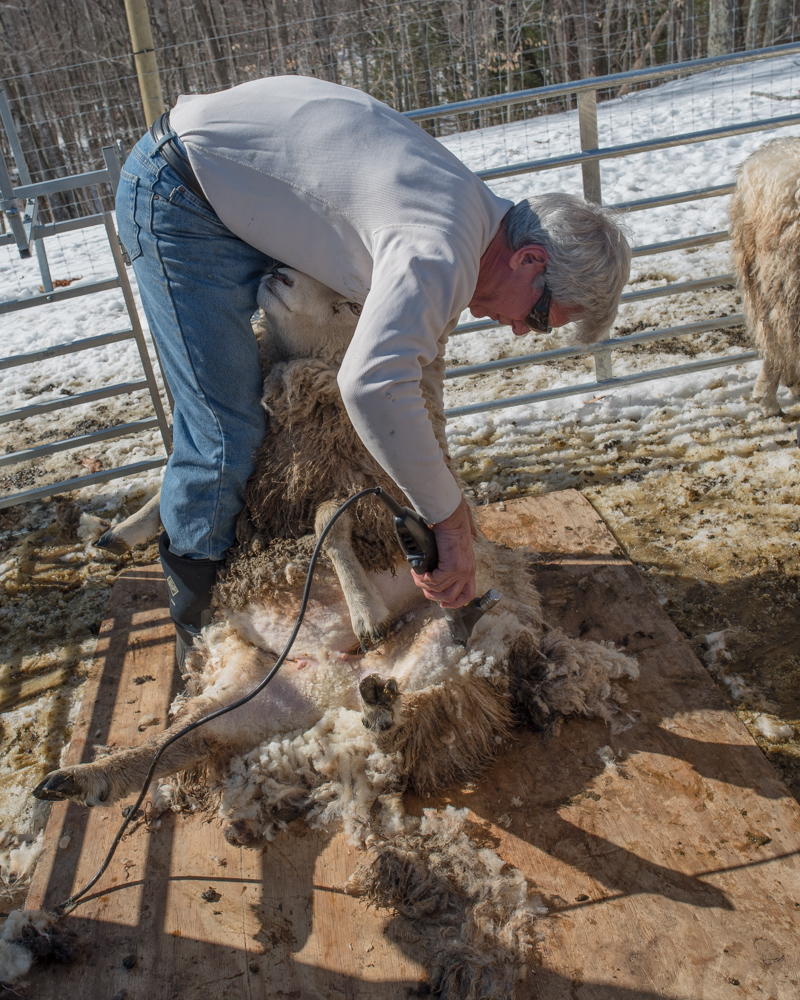
In the course of the shearing today, we got some more insights into the fate of Monday’s pasture lamb, but the true crime narrative will have to wait for a day or two…
Tagged: Bruce Clement, crutching, ewes, Hollow Oak Farm, pregnant, shearing, sheep